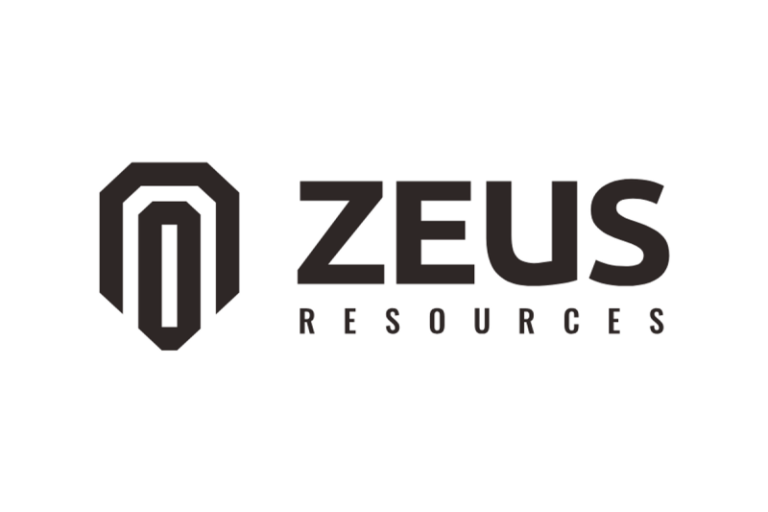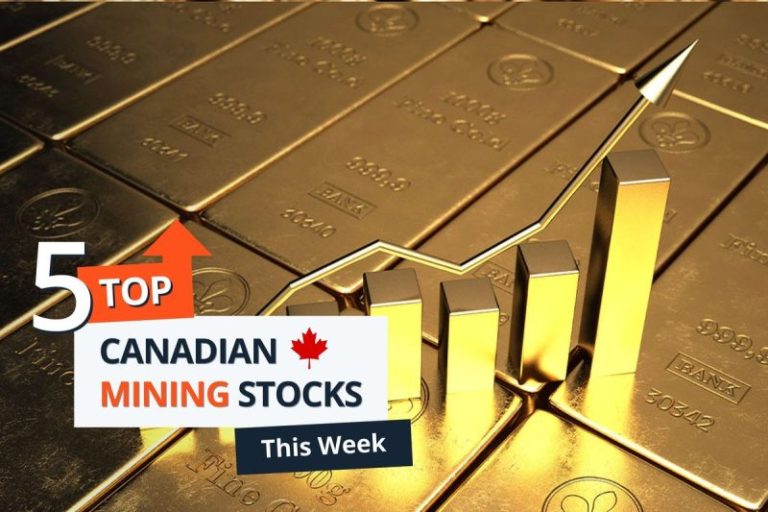Statistics Canada released July’s monthly mineral production survey on Friday (September 19). The data showed gold production increased month-over-month, while copper and silver declined; shipments, however, saw broad declines from June for all three metals.
Gold production increased significantly to 18,855 kilograms compared to 16,935 kilograms in June. Meanwhile, copper production fell to 37.99 million kilograms from 39.17 million kilograms in June, and silver production slipped to 25,345 kilograms from 28,390 kilograms.
As for shipments, gold shipments slid to 16,748 kilograms from 18,554, copper fell to 39.28 million kilograms from 45.96 million, and silver decreased to 26,397 kilograms from 31,181.
StatsCan released August’s consumer price index (CPI) data on Tuesday (September 16), the day before the Bank of Canada’s interest rate decision. The release showed that all-items inflation rose 1.9 percent on a yearly basis, up from the 1.7 percent recorded in July.
The agency attributed the faster growth in headline inflation in part to a slower year-over-year decline in gasoline prices, which fell 12.7 percent in August versus 16.1 percent in July, resulting in a less moderating effect on inflation than during the previous month.
StatsCan noted that without volatile gasoline prices included, CPI in August rose 2.4 percent year-over-year after registering a 2.5 percent increase in the three previous months.
The Bank of Canada chose to reduce its benchmark lending rate by 25 basis points to 2.5 percent on Wednesday (September 17), noting ‘a weaker economy and less upside risk to inflation.’ It marks the first cut since March, when it set the rate at 2.75 percent.
South of the border, the US Federal Reserve held its September meeting of the Federal Open Market Committee on Tuesday and Wednesday. The US central bank also chose to cut 25 basis points from the Federal Funds Rate, bringing it to the 4 percent to 4.25 percent range. It is the first change to the interest rate since the last 25 basis point cut in December 2024.
For more on what’s moving markets this week, check out our top market news roundup.
Markets and commodities react
Canadian equity markets were in positive territory this week.
The S&P/TSX Composite Index (INDEXTSI:OSPTX) set another new record high this week, ending the week up 1.29 percent to 29,768.36. The S&P/TSX Venture Composite Index (INDEXTSI:JX) performed even better, climbing 2.65 percent to finish Friday at 904.80, its first close above 900 since January 2022. The CSE Composite Index (CSE:CSECOMP) also jumped, gaining 4.98 percent to end the week at 162.04.
The gold price was in focus again this week as it climbed to another new record, reaching an intraday high of US$3,707 per ounce on Wednesday ahead of the FOMC meeting. While the price retreated slightly to US$3,642 on Thursday, it ended the week up 1.15 percent overall at US$3,685.26 per ounce.
The silver price was also volatile, rising to US$42.83 per ounce early in the week before dipping below US$42 per ounce in mid-week trading. It bounced back to end the week on 14 year highs, gaining 2.11 percent to close Friday at US$43.08.
Copper saw its mid-week gains erased by the end of the week, closing Friday largely flat at US$4.63 per pound. The S&P Goldman Sachs Commodities Index (INDEXSP:SPGSCI) echoed those movements with a 0.06 percent gain to end the week at 545.95.
Top Canadian mining stocks this week
How did mining stocks perform against this backdrop?
Take a look at this week’s five best-performing Canadian mining stocks below.
Stocks data for this article was retrieved at 4:00 p.m. EDT on Friday using TradingView’s stock screener. Only companies trading on the TSX, TSXV and CSE with market caps greater than C$10 million are included. Mineral companies within the non-energy minerals, energy minerals, process industry and producer manufacturing sectors were considered.
1. Japan Gold (TSXV:JG)
Weekly gain: 119.05 percent
Market cap: C$50.3 million
Share price: C$0.23
Japan Gold is an exploration company focused on a portfolio of Japan-based gold assets.
Its most advanced property is the Mizobe gold project located in Southern Kyushu. The site hosts several exploration targets covering an area of 2 kilometers by 2.5 kilometers and has produced river float samples up to 18.9 g/t of gold.
The company is also working on a trio of projects with Barrick (TSX:ABX,NYSE:B), the most advanced of which is the Hakuryu project located in Northern Hokkaido. The company has identified several targets, including the Hakuryu No. 3 vein, which hosts a 360 meter main zone with a thickness of 20 meters.
Shares in Japan Gold gained significantly at the end of the week; however, the company has not released news since September 9, when it reported that it had mobilized for a four-hole, 1,600 meter drill program at Mizobe.
2. Minnova (TSXV:MCI)
Weekly gain: 110 percent
Market cap: C$21.06 million
Share price: C$0.21
Minnova is an exploration and development company advancing its brownfield PL gold mine in Manitoba, Canada.
The property consists of 28 mining claims and covers an area of 5,114 hectares. An April 2018 feasibility study for the project indicated project economics with an after-tax net present value of C$36.7 million, an internal rate of return of 53 percent and a payback period of 1.2 years, calculated at a gold price of US$1,250 per ounce.
The company has been working to restart the mine over the past few years, but faced funding shortfalls. Trading for Minnova was halted on August 6 as it worked to resolve financial issues to maintain its listing on the TSXV.
On September 11, the company announced that trading would resume on the TSXV alongside a corporate update. It disclosed that it had a working capital deficiency of C$544,611 and is planning a private placement to address the shortfall. Funds will also go towards ongoing activities at PL, including drilling, test work and updated NI 43-101 techno-economic studies.
Minnova also announced that it is advancing plans for preliminary open-pit and underground mine design and layout, and that work on a new mine development plan that takes into account higher gold prices is underway.
Shares in Minnova have surged since trading resumed earlier this week from their price of under C$0.10 before the halt.
3. Stamper Oil and Gas (TSXV:STMP)
Weekly gain: 98.26 percent
Market cap: C$16.02 million
Share price: C$0.018
Stamper Oil and Gas is an exploration and development company working to advance offshore projects in Namibia.
The company holds an interest in five exploration blocks in Namibia; its most significant holding is a 32.9 percent stake in PEL 107 located in the Orange Basin. PEL 107 covers an area of 5,484 square kilometers and is located 210 kilometers from shore in an area that hosts three multi-billion-barrel discoveries since 2022.
The company has been conducting seismic work ahead of the planned drilling of an exploration well set to commence in 2027.
Stamper completed the acquisition of its holdings in the Namibian blocks on September 10, when it reported it had closed its purchase of BISP Exploration, originally announced on May 12.
4. New Break Resources (CSE:NBRK)
Weekly gain: 93.33 percent
Market cap: C$17.03 million
Share price: C$0.29
New Break Resources is a gold exploration company working to advance its Moray gold project in Northeastern Ontario, Canada.
The property is located near Timmins, within the Abitibi Greenstone Belt, and spans an area of 10,326 hectares. Additionally, it is situated 32 kilometres northwest of Alamos Gold’s (TSX:AGI) Young-Davidson gold mine, which produced 174,000 ounces of gold in 2024.
On Wednesday, New Break announced results from its six-hole, 1,502-meter maiden diamond drilling program at the site. The company highlighted one assay with an average grade of 4.11 grams per metric ton (g/t) gold over 31.3 meters, including an interval of 6.75 g/t over 7.1 meters.
The prior week, the company closed the final tranche of an oversubscribed private placement. In total, the company raised proceeds of C$1 million over three tranches, which will be used for ongoing exploration at Moray and for general working capital purposes.
5. Clean Tech Vanadium Mining (TSXV:CTV)
Weekly gain: 91.67 percent
Market cap: C$15.77 million
Share price: C$0.115
CleanTech Vanadium is an exploration company working to advance several critical mineral projects in the US.
Its most recent focus has been on its Kentucky-Illinois fluorspar projects, which consist of over a dozen deposits covering over 8,150 acres along the border of Kentucky and Illinois. Mining in the region dates back to the late 1800s and has produced 12.5 million metric tons of fluorspar, according to the company.
CleanTech also owns the Gibellini vanadium project in Nevada, US. The project has been approved for multiple state permits and received a positive environmental impact statement from the Bureau of Land Management. According to the project page, the site covers 21 kilometers and hosts a measured and indicated vanadium oxide resource of 127 million pounds.
Additionally, the company announced on August 6 that it had acquired the El Triunfo gold-antimony project near La Paz, Bolivia, from Silver Elephant for cash considerations of C$155,000.
The most recent announcement from CleanTech came on Tuesday when it welcomed an additional US$1 billion in funding programs from the Department of Energy (DoE) that was announced on August 13. It also highlighted the continued inclusion of fluorspar, germanium, gallium, indium and vanadium on the US Geological Survey’s Critical Minerals list.
CleanTech stated that it intends to explore funding options with the DoE, with a focus on advancing its Illinois-Kentucky fluorspar district. The company noted that the Department of Defense is funding research at the nearby Hicks Dome rare earth and fluorspar project in Illinois.
FAQs for Canadian mining stocks
What is the difference between the TSX and TSXV?
The TSX, or Toronto Stock Exchange, is used by senior companies with larger market caps, and the TSXV, or TSX Venture Exchange, is used by smaller-cap companies. Companies listed on the TSXV can graduate to the senior exchange.
How many mining companies are listed on the TSX and TSXV?
As of May 2025, there were 1,565 companies listed on the TSXV, 910 of which were mining companies. Comparatively, the TSX was home to 1,899 companies, with 181 of those being mining companies.
Together, the TSX and TSXV host around 40 percent of the world’s public mining companies.
How much does it cost to list on the TSXV?
There are a variety of different fees that companies must pay to list on the TSXV, and according to the exchange, they can vary based on the transaction’s nature and complexity. The listing fee alone will most likely cost between C$10,000 to C$70,000. Accounting and auditing fees could rack up between C$25,000 and C$100,000, while legal fees are expected to be over C$75,000 and an underwriters’ commission may hit up to 12 percent.
The exchange lists a handful of other fees and expenses companies can expect, including but not limited to security commission and transfer agency fees, investor relations costs and director and officer liability insurance.
These are all just for the initial listing, of course. There are ongoing expenses once companies are trading, such as sustaining fees and additional listing fees, plus the costs associated with filing regular reports.
How do you trade on the TSXV?
Investors can trade on the TSXV the way they would trade stocks on any exchange. This means they can use a stock broker or an individual investment account to buy and sell shares of TSXV-listed companies during the exchange’s trading hours.
Article by Dean Belder; FAQs by Lauren Kelly.
Securities Disclosure: I, Dean Belder, hold no direct investment interest in any company mentioned in this article.
Securities Disclosure: I, Lauren Kelly, hold no direct investment interest in any company mentioned in this article.
This post appeared first on investingnews.com










